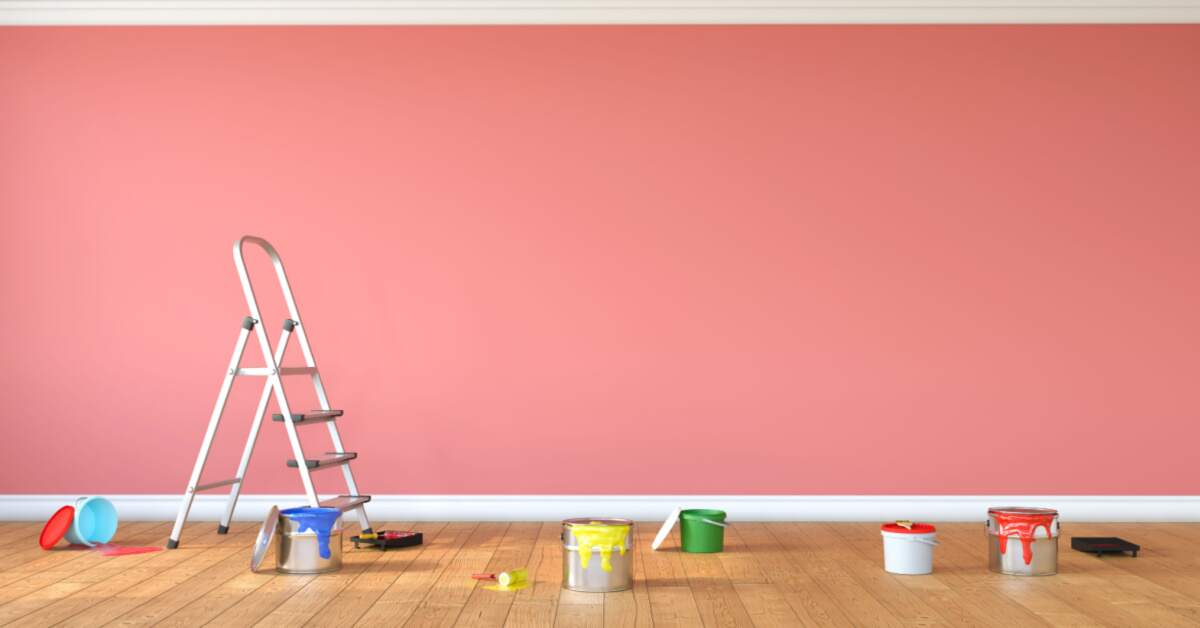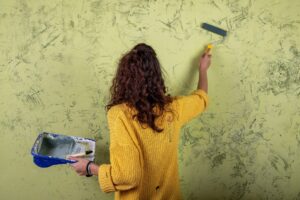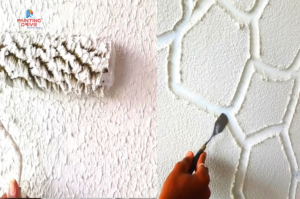While thinking about wall texture, amazing design related to wall texture comes into mind. The most important factor is to create an appealing and innovative design. In interior design, different types of wall texture can be introduced, such as materials, fabrics, finishes, and patterns, and they play a perfect match for an appealing environment. It enhances and improves the beauty of the wall texture from rustic to contemporary, thereby instilling personality and sophistication into your living space. It gives your wall a premium look.
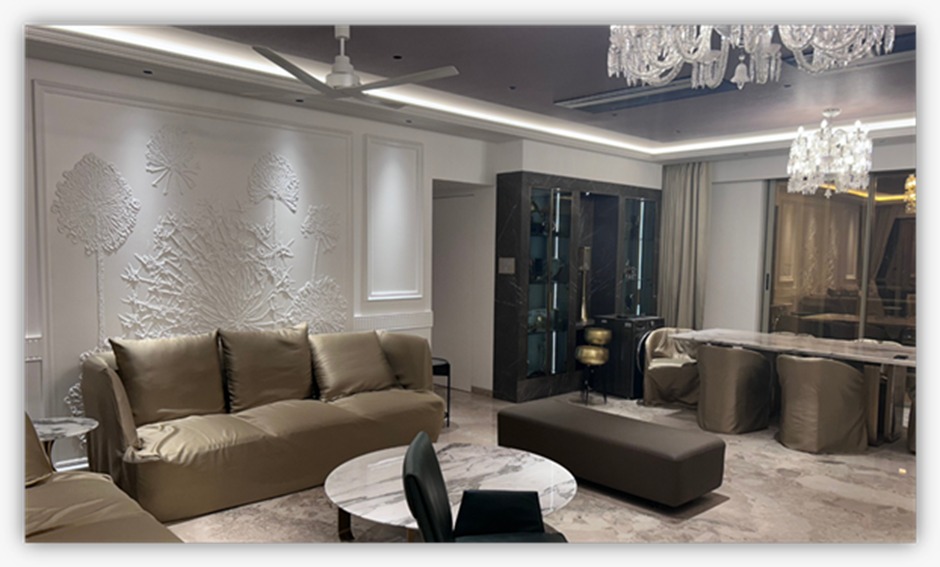
How to maintain wall textures
Maintaining wall texture is essential for preserving both the aesthetic and structural integrity look of your walls. Generally, the wall needs to be taken care of. So, here are some tips to help you maintain your wall texture:
Ozone Wall Texture
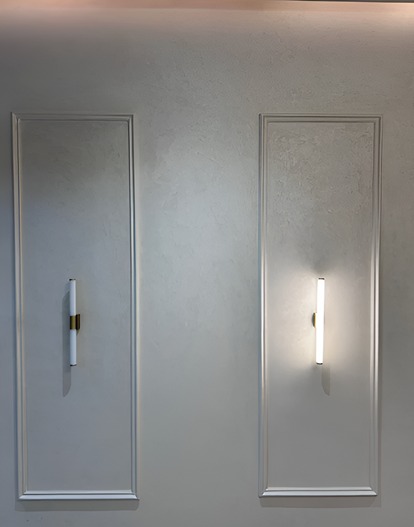
Dust regularly using a soft cloth material or vacuum cleaner, and clean it very gently with a mild soap solution and a soft sponge or soft cloth. Avoid excessive moisture to prevent damage, and repair any chips or cracks immediately with matched material. You can repaint the surface whenever required to keep the surface texture looking fresh and lovely.
Metallic wall texture:
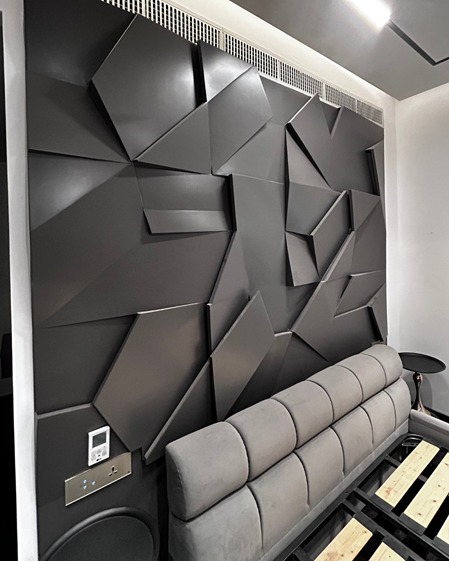
Dust regularly with a soft cloth or microfiber duster to prevent buildup. Clean using a soft, damp cloth with minimal soap; harsh cleaners harm the metallic finish. Always prevent moisture from touching the surface; maybe it can cause the surface to streak or dull. Touch up scratches or chips using a matching metallic paint for a near-perfect shine.
Concrete wall texture:
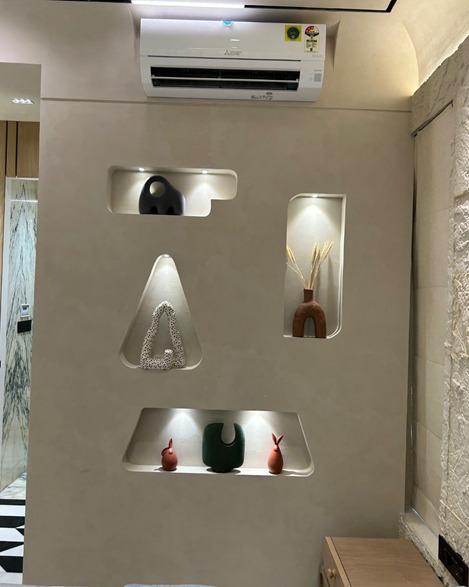
You can regularly dust surfaces using a soft cloth or microfiber duster to avoid buildup. When cleaning, a slightly damp cloth with a mild soap solution is advisable because harsh cleaners can damage the metallic finish. Be sure not to let moisture sit on the surface, as it could cause streaks and dullness. Touch up any scratches or chips that may develop using metal paint that matches that color to restore the finish.
Wabi-Sabi:

Wipe again and again with a soft cloth or microfiber duster to keep the dust much at bay. Do not use any other cleaning materials than a mild soap solution, and use a soft sponge while cleaning because abrasives will damage the natural unfinished, imperfect finish. Be accepting of the condition of the texture: tiny imperfections reflect the Wabi-Sabi concept; however, major damages should be addressed as soon as possible with replacement materials to preserve the unique charm of the texture.
Stone coat:
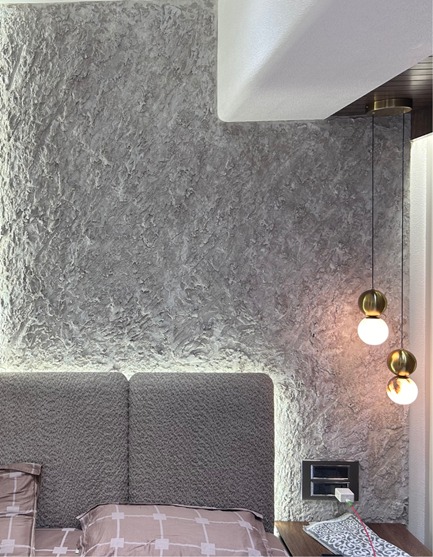
Dust the surfaces regularly with a soft cloth or vacuum with a brush attachment. Gentle cleaning is done by using a mild soapy solution on a damp cloth, avoiding harsh or abrasive chemicals and tools. Avoid excess moisture on the surface as it will cause discoloration or damage to the stone. Any chips or cracks should be repaired with matching stone-coat material to keep the appearance of the texture and protect it.
Bricks:

Dust or sweep the surface on a regular basis to avoid dirt buildup. Clean with a soft cloth and a mild soap solution, avoiding any harsh chemicals which may damage the texture. Do not allow moisture to build up to prevent any mold or decay, and reseal from time to time to keep the look.
Stucco:
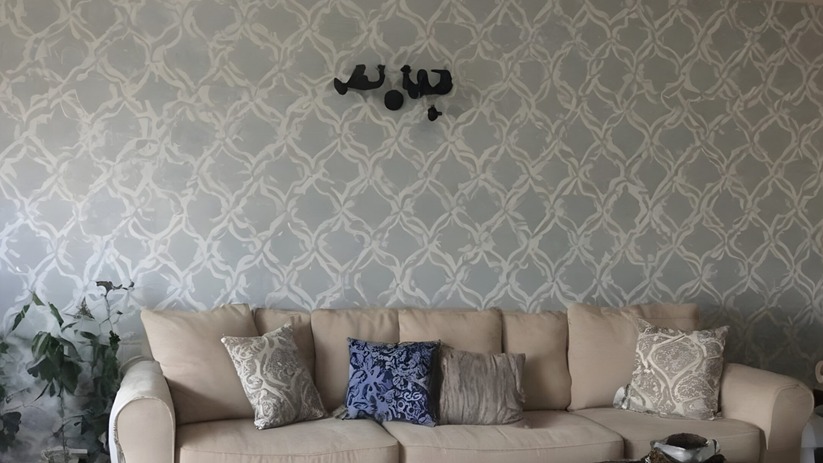
Dirt and debris should routinely be taken away through regular dusting and sweeping. Cleaning should be done using a soft cloth and a mild soap-and-water solution; do not use chemicals that are harsh and could damage the texture. Any cracks or damage should be repaired immediately with stucco material that matches. Adequate water drainage will help prevent water damage, and periodic resealing of the stucco will certainly help to prolong its life and keep up its appearance.
Merits and Demerits of Wall Textures: Is It Just Right for Your Space?
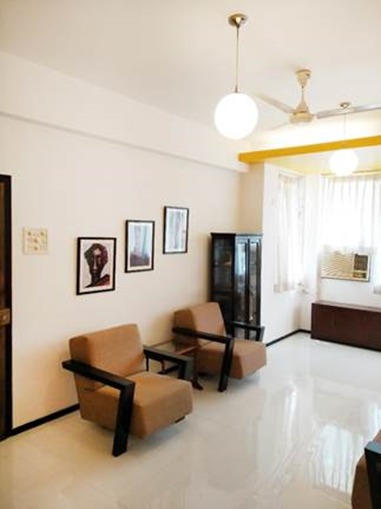
Merits of wall texture:
Visual Attraction: Any kind of wall texturing provides more depth, character, and personality to an otherwise visually compelling and energetic environment.
Masking Imperfections: Wall textures are quite effective in hiding the flaws, cracks, and unevenness of the surface underneath; consequently, they are good to use on older walls or walls that have, unfortunately, been imperfect.
Sound insulation: Bumpy walls are really good if you want sound absorption in a noisy environment; in other words, if the texture is a pretty good acoustic idea, then it’s meant to be bumpy.
Durability: Several textures, including stucco and plaster, are hard-wearing and resistant to wear, which helps maintain the appearance of your walls for many years.
Customizable Wall Pasted: Wall textures could be in various styles like Venetian, knockdown, or orange peel to allow house owners to choose the finish according to their aesthetic likes.
Demerits of Wall Texture:
Difficult to Clean: Corrugated surface walls have always been challenging compared to those with smooth interiors to wash off dust, dirt, and crannies.
Maintenance: Some textured finishes, such as stucco, may need periodic touch-ups or resealing to keep them looking good and avoid cracking in the long run.
Outdated: Any homeowner that loves exposed brick or a minimalist look spends as much energy and money getting wall finishes off as they did putting them on.
An Imposition in Small Spaces: Textured walls tend to make tight rooms feel smaller or cluttered, which adds visual weight to the space.
Initial Cost: Textured finishes may consume more time, effort, and money as their key elements than normal smooth wall applications.
Conclusion:
Neglecting any textured wall repairs or cleaning operations will ensure that, into old age, a few painted wall patterns will simply lose their regal flair; with swift re-decorating ideas and willy-nilly repositioning of furniture, however, are tempting avenues to discover one’s creativity.

